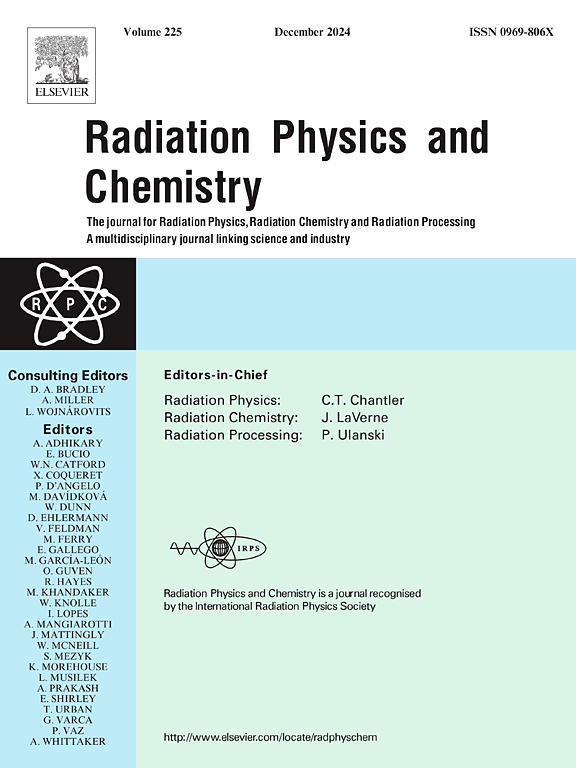Effect of Ba0.93Ca0.04La0.03Sn0.1Ti0.9O3 addition on structural and electrical properties of lead-free 0.5Ba(Zr0.2Ti0.8)O3-0.5(Ba0.7Ca0.3)TiO3 piezoelectric ceramics
IF 2.8
3区 物理与天体物理
Q3 CHEMISTRY, PHYSICAL
引用次数: 0
Abstract
The doping of other materials into the structure of BCZT ceramics can improve the electrical properties. The lead-free piezoelectric ceramics in the (1-x)BCZT–xBCLST binary system, where x = 0.00, 0.01, 0.03, 0.05, and 0.07 mol, were synthesized using a two-step mixed oxide method. Initially, pure phases of 0.5Ba(Zr0.2Ti0.8)O3-0.5(Ba0.7Ca0.3)TiO3 (BCZT) and Ba0.93Ca0.04La0.03Sn0.1Ti0.9O3 (BCLST) powders were separately prepared by mixed oxide and conventional solid-state reaction methods. X-ray diffraction patterns and Ti K-edge X-ray Absorption Near-Edge Structure (XANES) spectra revealed structural distortions in BCLST-doped ceramics. The electrical properties including dielectric, piezoelectric, and ferroelectric properties were evaluated. Besides, the dielectric constant and dielectric loss at room temperature of BCZT–BCLST ceramics were enhanced with increasing BCLST content. The dielectric properties at room temperature improved with increasing BCLST concentration from x = 0.00 to x = 0.03 mol, with the maximum dielectric constant rising from 1408 to 2552—an increase of approximately 81 %. The hysteresis P–E loop of BCZT–BCLST ceramics exhibited a slim loop, with a maximum remanent polarization (Pr) of 7.22 μC/cm2 observed at x = 0.03 mol. The optimal doping condition for BCLST in BCZT ceramics was found at 0.03 mol, yielding the highest piezoelectric coefficient (d33) of 235 pC/N—an improvement of approximately 9 % compared to the undoped sample (x = 0.00).
添加Ba0.93Ca0.04La0.03Sn0.1Ti0.9O3对无铅0.5Ba(Zr0.2Ti0.8)O3-0.5(Ba0.7Ca0.3)TiO3压电陶瓷结构和电学性能的影响
在BCZT陶瓷结构中掺入其他材料可以改善其电学性能。采用两步混合氧化法制备了x = 0.00、0.01、0.03、0.05、0.07 mol的(1-x) BCZT-xBCLST二元体系中的无铅压电陶瓷。首先,采用混合氧化物法和常规固相法分别制备了0.5Ba(Zr0.2Ti0.8)O3-0.5(Ba0.7Ca0.3)TiO3 (BCZT)和Ba0.93Ca0.04La0.03Sn0.1Ti0.9O3 (BCLST)纯相粉体。x射线衍射图和Ti k -边缘x射线吸收近边缘结构(XANES)光谱显示了bclst掺杂陶瓷的结构畸变。电学性能包括介电、压电和铁电性能。BCZT-BCLST陶瓷的介电常数和介电损耗随BCLST含量的增加而增大。当BCLST浓度从x = 0.00 mol增加到x = 0.03 mol时,室温下的介电性能得到改善,最大介电常数从1408增加到2552,增加了约81%。BCZT-BCLST陶瓷在x = 0.03 mol时的最大剩余极化(Pr)为7.22 μC/cm2。BCLST在BCZT陶瓷中的最佳掺杂条件为0.03 mol,其压电系数(d33)为235 pC/ n,比未掺杂样品(x = 0.00)提高了约9%。
本文章由计算机程序翻译,如有差异,请以英文原文为准。
求助全文
约1分钟内获得全文
求助全文
来源期刊

Radiation Physics and Chemistry
化学-核科学技术
CiteScore
5.60
自引率
17.20%
发文量
574
审稿时长
12 weeks
期刊介绍:
Radiation Physics and Chemistry is a multidisciplinary journal that provides a medium for publication of substantial and original papers, reviews, and short communications which focus on research and developments involving ionizing radiation in radiation physics, radiation chemistry and radiation processing.
The journal aims to publish papers with significance to an international audience, containing substantial novelty and scientific impact. The Editors reserve the rights to reject, with or without external review, papers that do not meet these criteria. This could include papers that are very similar to previous publications, only with changed target substrates, employed materials, analyzed sites and experimental methods, report results without presenting new insights and/or hypothesis testing, or do not focus on the radiation effects.
 求助内容:
求助内容: 应助结果提醒方式:
应助结果提醒方式:


